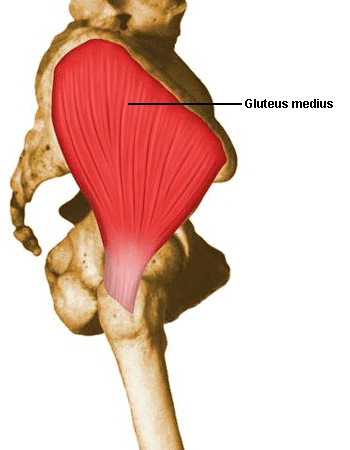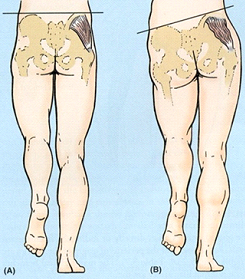Book in using this link: https://physio4richmond.connect.tm3app.com/
Gluteus Medius
Gluteus Medius - Do Runners overlook this muscle?
In clinic every week I treat a variety of runners – ranging from 5K strollers to more serious marathon runners. Time and time again runners present with various overuse injuries of the lower limb brought about by weakness of one very important muscle. This muscle is Gluteus Medius. Why is this muscle so weak? One hypothesis is that as running is a uniplanar motion, athletes who solely participate in running and no other sports develop muscle imbalances of their lower limbs and so therefore their hip muscles are often ignored. For example I have found that Triathletes and even Footballers have greater all round leg strength compared to people who solely run. This is because their body is being required to work in different planes of movement thus stimulating different muscle groups to work harder.
Where is this muscle?
As you can see opposite the gluteus medius muscle originates below the iliac crest and inserts at the top of the greater trochanter.
It is probably the most important muscle that enables the athlete to attain a biomechanically efficient running technique. This is due to the fact that during running runners are always either balancing on one leg or completely in the air. Gluteus medius is the major abductor of the thigh, but during the stance phase (i.e. when you are balancing on one leg during running) it acts as a pelvic stabiliser. If weakness is present during this phase, problems will arise.
In my experience it can lead to any number of lower limb injuries – e.g ITB syndrome, patellofemoralpain, achilles tendinopathy and even plantar fasciitis to name but a few. How do these problems occur? For example weakness of the right gluteus mediuswill cause the left pelvis/hip to drop when standing on the right limb. Subconsciously in an attempt to keep the pelvis level the athlete will adduct and internally rotate his right lower leg. The athlete still may not succeed fully in achieving a nice neutral pelvis (figure a.) and so will display a marked waddling motion when they run on a treadmill (figure b.). So in essence due to poor gluteus mediusstrength all of the other structures of the hip take on pressure they weren’t designed for and pain develops directly or indirectly as a result.
Then what happens? Over time small muscle tears develop in gluteus medius and the surrounding muscles followed by inflammation. If this is not treated it leads to a vicious cycle of – muscle inhibition, pain, altered stride length, further muscle inhibition and then again more pain. The athlete tries to compensate (as they are so good at!), by changing his/her stride length to reduce the ground force reaction when their foot touches the floor. We are all designed to run in a set individual pattern and if there is any sudden change in that pattern this leads to biomechanical related pain.
So what does the athlete do if this happens? Well initially a diagnosis is made by your physiotherapist using manual, static and dynamic tests. Commonly the athlete would display a poor single leg squat – his knee would drift inwards and his pelvis would not remain level. He usually is tender around the area of that muscle on palpation.
Then your physiotherapist needs to help you break this vicious cycle of inflammation and pain. Deep tissue massage, Trigger point therapy and Acupuncture can all alleviate pain and/or break up scar tissue. Then after this stage of your rehab is over an individually tailored stretching and strengthening program needs to be created for you. There is an array of exercises out there to help you overcome this problem but this is up to your physiotherapist to guide you through the correct exercise pathway to return you to running.


